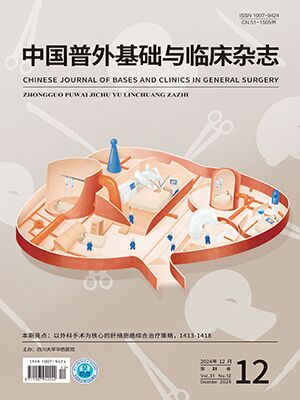Objective To explore the risk factors of female’s breast cancer in secondary cities of the west and establish a risk prediction model to identify high-risk groups, and provide the basis for the primary and secondary preve-ntion of breast cancer.
Methods Random sampling (method of random digits table) 1 700 women in secondary cities of the west (including 1 020 outpatient cases and 680 physical examination cases) were routinely accept the questionnaire survey. Sixty-two patients were confirmed breast cancer with pathologically. Based on the X-image of the mammary gland patients and questionnaire survey to put mammographic density which classificated into high- and low-density groups. The relationships between the mammographic density, age, body mass index (BMI), family history of breast cancer, socio-economic status (SES), lifestyle, reproductive fertility situation, and breast cancer were analyzed, then a risk prediction model of breast cancer which fitting related risk factors was established.
Results Univariate analysis showed that risk factors for breast cancer were age (P=0.006), BMI (P=0.007), age at menarche (P=0.039), occupation (P=0.001), domicile place (P=0.000), educational level (P=0.001), health status compared to the previous year (P=0.046), age at first birth (P=0.014), whether menopause (P=0.003), and age at menopause (P=0.006). The unconditional logistic regr-ession analysis showed that the significant risk factors were age (P=0.003), age at first birth (P=0.000), occupation (P=0.010), and domicile place (P=0.000), and the protective factor was age at menarche (P=0.000). The initially established risk prediction model in the region which fitting related risk factors was y=-5.557+0.042x1-0.375x2+1.206x3+0.509x4+2.135x5. The fitting coefficient (R square)=0.170, it could reflect 17% of the actual situation.
Conclusions The breast cancer risk prediction model which established by using related risk factors analysis and epidemiological investigation could guide the future clinical work,but there is still need the validation studies of large populations for the model.
Citation: XU Weiyun,ZHAO Jieyu,ZHANG Jing,ZHAO Lijuan,LIN Hua,CHEN Xiang,LI Ke,YANG Xiaolin. Research on Relevant Factors of Female’s Breast Cancer and Establishment of Risk Factors Prediction Model in Secondary Cities of The West. CHINESE JOURNAL OF BASES AND CLINICS IN GENERAL SURGERY, 2013, 20(10): 1106-1112. doi: Copy
Copyright © the editorial department of CHINESE JOURNAL OF BASES AND CLINICS IN GENERAL SURGERY of West China Medical Publisher. All rights reserved




